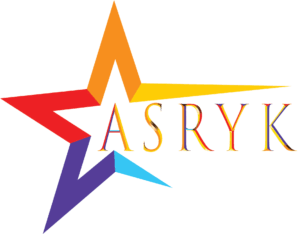Meta Llama 3: A Comprehensive Look at the State-of-the-Art Language Model
Large language models (LLMs) have emerged as a revolutionary force in artificial intelligence, pushing the boundaries of what machines can understand and generate human language. Meta Llama 3, released in late 2023, stands as a testament to this progress. This article delves into the intricacies of Llama 3, exploring its capabilities, architecture, and potential applications.
A Legacy of Innovation: The Lineage of Llama
Meta, formerly Facebook, has a history of significant contributions to the field of LLMs. Their prior models, such as Blender and Jurassic-1 Jumbo, laid the groundwork for the development of Llama. Each iteration addressed limitations of previous models, leading to the impressive performance of Llama 3.
Unveiling the Powerhouse: Key Features of Meta Llama 3
Llama 3 boasts several advancements that solidify its position as a leading LLM. Here’s a breakdown of its core strengths:
- Massive Scale: Meta Llama 3 comes in two sizes: 8 billion and 70 billion parameters. This immense capacity allows it to process vast amounts of text data, leading to a deeper understanding of language nuances.
- Multilingual Proficiency: Meta emphasizes Llama 3’s multilingual capabilities. The model is trained on a diverse dataset of languages, enabling it to handle translation tasks effectively and generate text in various languages.
- Improved Reasoning: One of the biggest leaps in Meta Llama 3 is its enhanced reasoning abilities. The model leverages techniques like grouped-query attention (GQA) to analyze complex relationships within text, leading to more logical and coherent responses.
- Instruction Fine-Tuning: Meta Llama 3 offers “instruction fine-tuned” versions. These models are pre-trained with specific instructions in mind, allowing for even greater specialization in tasks like question answering or code generation.
- Reduced Bias and Improved Safety: Meta has made significant efforts to mitigate bias and safety concerns with Meta Llama 3. Improved post-training procedures minimize the likelihood of generating offensive or misleading content.
Under the Hood: The Architecture of Meta Llama 3
Understanding the technical aspects of Meta Llama 3 sheds light on its capabilities. Here’s a glimpse into its inner workings:
- Transformer Architecture: At its core, Meta Llama 3 utilizes the Transformer architecture, a prevalent approach in LLMs. This architecture relies on encoder-decoder mechanisms to process and generate text.
- Grouped-Query Attention (GQA): This novel technique groups similar queries during training, enhancing efficiency for longer sequences. This allows the 8B model to perform at par with larger models in terms of inference speed.
- Tiktoken-based Tokenizer: Meta Llama 3 employs a new tokenizer that encodes more characters per token. This improves performance on both English and multilingual benchmarks.
A Spectrum of Applications: How Meta Llama 3 Can Transform Industries
The potential applications of Meta Llama 3 are vast and diverse. Here are some prominent examples:
- Content Creation: From generating marketing copy to writing scripts, Meta Llama 3 can act as a powerful tool for content creators, boosting productivity and fostering creative exploration.
- Machine Translation: The model’s multilingual capabilities make it ideal for real-time translation, breaking down language barriers in communication and collaboration.
- Education and Research: Llama 3 can serve as a valuable research assistant, summarizing vast amounts of information and generating research questions. Its ability to explain complex concepts can enhance learning experiences.
- Software Development: The model’s code generation capabilities can streamline the development process, assisting with tasks like code completion and debugging.
- Customer Service: Chatbots powered by Llama 3 can provide efficient and personalized customer service, addressing inquiries and resolving issues promptly.
The Road Ahead: Challenges and Future Directions
Despite its advancements, Llama 3 still faces challenges. Here are some key areas for ongoing exploration:
- Explainability and Transparency: Understanding how Llama 3 arrives at its outputs remains a challenge. Further research on explainable AI can make the model’s reasoning processes more transparent.
- Ethical Considerations: The potential for bias and misuse requires ongoing vigilance. Developers and users must collaborate to ensure responsible application of this powerful technology.
- Safety and Security: Mitigating the risk of generating harmful content requires continuous refinement of training data and algorithms.
Deep Dive: Exploring the Technical Nuances of Meta Llama 3
The previous section offered a general understanding of Llama 3. Now, let’s delve deeper into its technical aspects for a more comprehensive picture.
Transformer Architecture: A Foundation for Success
Llama 3, like many contemporary LLMs, leverages the Transformer architecture. This neural network architecture, introduced in 2017, revolutionized the field of machine translation and has become the de facto standard for text-based LLMs.
The Transformer’s core principle resides in its encoder-decoder structure. The encoder takes an input sequence, processes it character by character, and generates a contextual representation. This representation captures the relationships between words in the sequence. The decoder then utilizes this representation to generate the output sequence, one token at a time.
Attention Mechanism: The Heart of the Transformer
One of the most crucial components of the transformer is the attention mechanism. This mechanism allows the model to focus on specific parts of the input sequence when generating the output. Here’s how it works:
- Similarity Scores: The encoder outputs a vector for each token in the input sequence. The attention mechanism compares each encoder vector with every other vector, calculating a similarity score.
- Weighted Representation: These similarity scores determine how much “attention” the decoder pays to each encoder vector when generating a particular token in the output sequence. Essentially, the decoder creates a weighted average of the encoder vectors, focusing on the most relevant parts of the input for each output token.
Grouped-Query Attention (GQA): A Key Innovation in Llama 3
While the standard Transformer architecture is powerful, it can become computationally expensive with longer sequences. One of the key innovations in Llama 3 is the introduction of Grouped-Query Attention (GQA).
GQA works by grouping similar queries during the training phase. This allows the model to learn a single representation for a group of related queries, reducing redundancy and improving efficiency. This innovation is particularly beneficial for the smaller, 8B parameter Meta Llama 3 model, enabling it to compete with larger models in terms of inference speed.
Tiktoken-based Tokenizer: Enhancing Text Representation
Another notable aspect of Llama 3 is its use of a novel tokenizer called the Tiktoken tokenizer. Traditional tokenizers break down text into individual characters or words. The Tiktoken tokenizer, on the other hand, groups multiple characters into a single unit called a “Tiktoken.” This approach allows the model to process more information per token, leading to a more nuanced understanding of the text. Additionally, the Tiktoken tokenizer has been shown to improve performance on both English and multilingual benchmarks.
A Look Beyond: Exploring Additional Technical Details
This discussion provides a foundational understanding of the core technical elements driving Meta Llama 3. However, the world of LLMs is constantly evolving, and several additional aspects contribute to their functionality. Further exploration might involve:
- Positional Encoding: Since the Transformer processes text sequentially, it lacks inherent information about the order of words. Positional encoding techniques are employed to inject this information, allowing the model to understand the relative positions of words within a sequence.
- Multi-Head Attention: The standard attention mechanism focuses on a single aspect of the similarity between input tokens. Multi-head attention allows the model to learn multiple representations, attending to different aspects of the relationships within the text simultaneously.
- Layer Normalization: Training deep neural networks is prone to vanishing or exploding gradients, hindering convergence. Layer normalization techniques address this issue by normalizing the activations of each layer, facilitating the training process.
Understanding these intricacies requires a deeper dive into research papers and technical documentation. However, this basic understanding lays the groundwork for appreciating the complexity and ingenuity behind LLMs like Llama 3.
The Next Steps: Advancing the Capabilities of Llama 3
While Llama 3 represents a significant leap forward, the journey of LLMs is far from over. Here are some areas where researchers are actively working to enhance future iterations:
- Scaling Up with Efficiency: While larger models like the 70B parameter Llama 3 offer superior performance, their computational demands are substantial. Researchers are striving for more efficient architectures that can achieve similar performance with reduced hardware requirements.
- Lifelong Learning: Current LLMs require extensive retraining for incorporating new information. Researchers are exploring lifelong learning techniques that allow models to continuously learn and adapt without extensive retraining.
- Commonsense Reasoning and Knowledge Integration: LLMs currently excel at statistical language processing, but integrating commonsense reasoning and factual knowledge remains a challenge. Advancements in this area would allow them to understand the world in a more human-like way.

By addressing these challenges, researchers can unlock the full potential of LLMs like Llama 3, leading to a future where these powerful tools seamlessly integrate into our lives and empower us in new and exciting ways.
Conclusion: A Catalyst for Progress
Meta Meta Llama 3 marks a significant milestone in the evolution of LLMs. Its impressive capabilities and vast potential applications position it as a game-changer across various industries. As researchers continue to address challenges and explore new avenues, Meta Llama 3 paves the way for a future where AI seamlessly integrates into our lives, amplifying human ingenuity and innovation.



